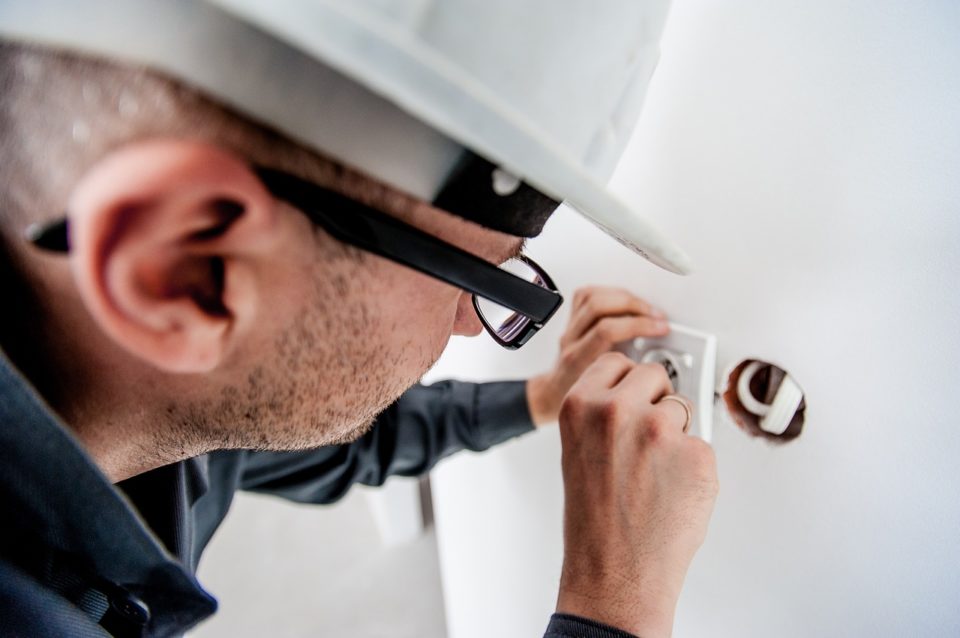From faulty washing machines to boilers on the blink, find out which repairs are the responsibility of tenants and which things landlords are required to fix.

Whether you’re a tenant or a landlord, it’s important to know which repairs you are responsible for in a rental home. The law is very clear about which repairs and home maintenance jobs fall to the landlord, so, if you’re renting out property, it’s worth getting to know your legal obligations when it comes to keeping your tenants safe and maintaining the property to a decent standard.
There are, however, many duties required of tenants too – and some home maintenance tasks are dependent on what it says in the tenancy agreement. We delve into this tricky matter to provide some clarity …
A landlord’s repair responsibilities
By law, the landlord is responsible for all structural issues in the home, including:
- electrical, wiring and electrical appliances
- gas pipes and gas appliances
- heating and hot water
- basins, sinks, baths and other sanitary fittings including pipes and drains
- chimneys and ventilation
- drains, guttering and external pipework
- the structure and exterior of the building, including walls, roofs, stairs and bannisters plus external doors and windows
However, the landlord is not responsible for problems caused a tenant’s negligence – a broken window, for example.
Once a problem has been fixed, the landlord must make good the decoration to the same standard as at the start of the tenancy.

A landlord’s responsibility for health and safety
The landlord must ensure the home is fit for habitation, which means it is safe and free from hazards and won’t adversely affect the health or cause injury to the tenant. This also means there should be no issues to prevent the tenant from making full use of the home. Areas covered by this landlord obligation include:
Damp and mould
The landlord must carry out the structural repairs needed to prevent damp. These could include fixing the causes of penetrating damp, such as leaking internal pipes, faulty guttering or external pipes or cracks in walls and window frames. They should also ensure that there is a proper working damp-proof course to tackle rising damp and carry out any repairs to the heating and ventilation that are causing condensation.
Rats, mice and pests
The landlord is responsible for work to prevent rats, mice, cockroaches or other pests from getting into the property – by repairing holes in walls, broken air vents etc. However, the tenant is responsible for dealing with small scale infestations, unless they make the home unfit for habitation. The tenant must also take steps to prevent pests – by clearing food from the floor, for example.
Gas and electrical safety
It is the landlord’s responsibility to make sure that the gas supply and all gas appliances in the property are in a safe condition. They should be fitted, repaired and checked every year by a Gas Safe-registered engineer. This applies to gas pipework, gas cookers, gas boilers, gas fires and gas water heaters.
The same is true for electrical wiring, plug sockets and any electrical appliances which the landlord has provided.
Fire safety
Working smoke alarms should be fitted on each floor and carbon monoxide detectors in any room heated by solid fuel. The landlord must make sure these are replaced if faulty, but the tenant is responsible for replacing batteries.
Repairs a tenant is responsible for
Tenants are responsible for any appliances or furniture items, which they have provided. They may also be required to arrange repairs for appliances belonging to the landlord (such as a washing machine or oven), which are not working but not causing a danger. This should be set out in the tenancy agreement.
Additional duties may also be included in the tenancy agreement – decorating or gardening, for example, but the landlord isn’t allowed to assign repairs to the tenant that they are legally required to complete.
Looking after the home
Tenants are required to look after the rental home – in, what the law calls ‘a tenant-like way’. This means:
- doing minor repairs, such as changing fuses and light bulbs
- carrying out regular cleaning
- making sure that they, or their visitors, do not damage the property
- using any fixtures and fittings properly, for example, not blocking a toilet by flushing something unsuitable.
If the tenant, or one of their visitors, causes damage to the property, they will be liable for the cost of fixing it. The landlord may prefer to carry out repairs and charge the tenant for the cost.
Reporting problems
Tenants must report all repairs to the landlord quickly, to prevent problem situations escalating.
A landlord’s right of access
Landlords have a right to enter the property to fulfil their legal responsibilities, as long as they have given at least 24 hours’ notice and that the proposed visit is at a reasonable time. The landlord should give notice in writing, stating who will enter the property and why. In a genuine emergency, such as fire, flood or a smell of gas, a landlord may enter the premises without seeking the tenant’s permission first.




